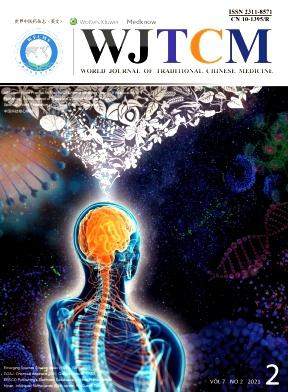Predicting the 7th day efficacy of acupoint application of Chinese herbs (Xiao Zhong Zhi Tong Tie) in patients with diarrhea – A machine-learning model based on XGBoost algorithm
IF 3.2
3区 医学
Q1 INTEGRATIVE & COMPLEMENTARY MEDICINE
引用次数: 2
Abstract
Objective: Extreme gradient boosting (XGBoost) was used to predict the 7th day efficacy of the acupoint application (AP) of Chinese herbs (Xiao Zhong Zhi Tong Tie) in patients with diarrhea. Materials and Methods: We consecutively collected medical records of patients with diarrhea nationwide on the Chun Bo Wan Xiang cloud platform from August 22 to November 5, 2020. Demographic and clinical data and the fecal properties were included in this study. We established the XGBoost model to predict the 7th day efficacy of AP in patients with diarrhea. The XGBoost model was evaluated using the area under the receiver operating characteristic (ROC) curve (AUC). We next compared the performance of XGBoost with that of artificial neural network (ANN), ANN + boosting, ANN + bagging, and support vector machine (SVM). Results: The XGBoost model provided a prediction accuracy of 84.86% (95% confidence interval = 82.74% to 86.81%) and the ROC curve analysis showed an AUC of 0.81. The top-three variables with the highest importance are age, duration of diarrhea, and region (North). Our study revealed that XGBoost was not superior to ANN, ANN + boosting, ANN + bagging, and SVM. Conclusions: The established XGBoost model for predicting the 7th day efficacy of AP in patients with diarrhea exhibited good accuracy and precision, which can be used for efficacy prediction.基于XGBoost算法的机器学习模型预测中药穴位敷贴对腹泻患者第7天的疗效
目的:采用极限梯度升压法(XGBoost)预测中药穴位贴敷(AP)治疗腹泻患者的第7天疗效。材料与方法:我们于2020年8月22日至11月5日在春Bo万想云平台上连续收集了全国腹泻患者的病历资料。人口统计学和临床数据以及粪便特性包括在本研究中。我们建立了XGBoost模型来预测AP在腹泻患者中的第7天疗效。XGBoost模型使用受试者工作特性(ROC)曲线下面积(AUC)进行评估。接下来,我们将XGBoost的性能与人工神经网络(ANN)、ANN+boosting、ANN+bagging和支持向量机(SVM)的性能进行了比较。结果:XGBoost模型的预测准确率为84.86%(95%置信区间=82.74%至86.81%),ROC曲线分析显示AUC为0.81。最重要的前三个变量是年龄、腹泻持续时间和地区(北方)。我们的研究表明,XGBoost并不优于ANN、ANN+boosting、ANN+bagging和SVM。结论:建立的XGBoost模型预测AP对腹泻患者第7天疗效具有良好的准确性和精密度,可用于疗效预测。
本文章由计算机程序翻译,如有差异,请以英文原文为准。
求助全文
约1分钟内获得全文
求助全文
来源期刊

World Journal of Traditional Chinese Medicine
Medicine-Complementary and Alternative Medicine
CiteScore
5.40
自引率
2.30%
发文量
259
审稿时长
24 weeks
 求助内容:
求助内容: 应助结果提醒方式:
应助结果提醒方式:


